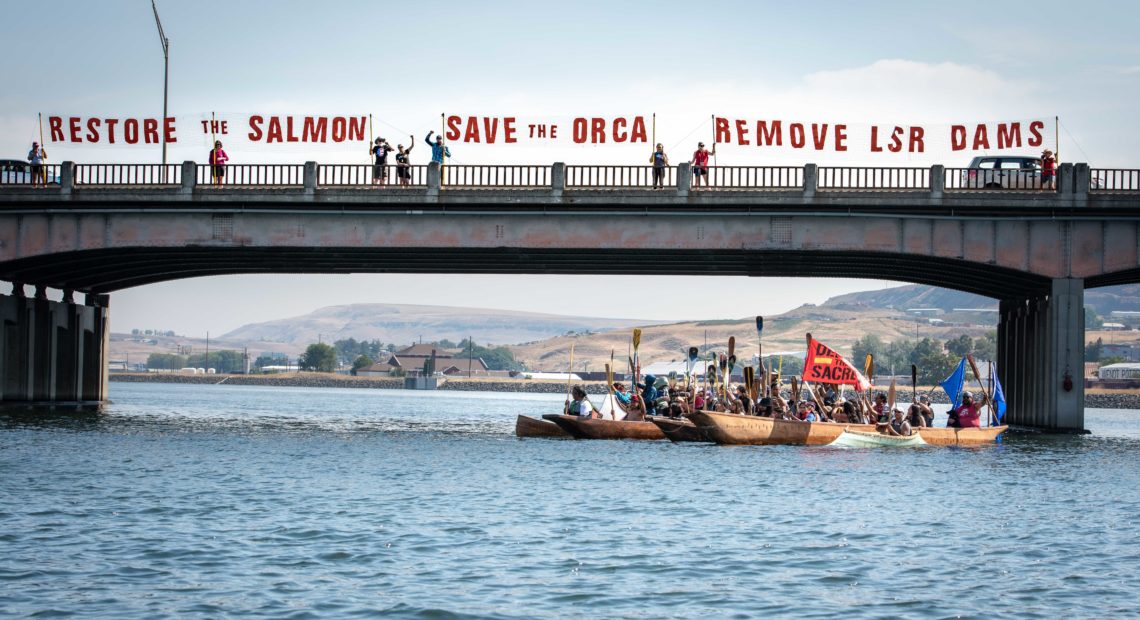
One Idea To Remove Snake River Dams May Be Dead In The Water. Inslee And Murray Oppose It
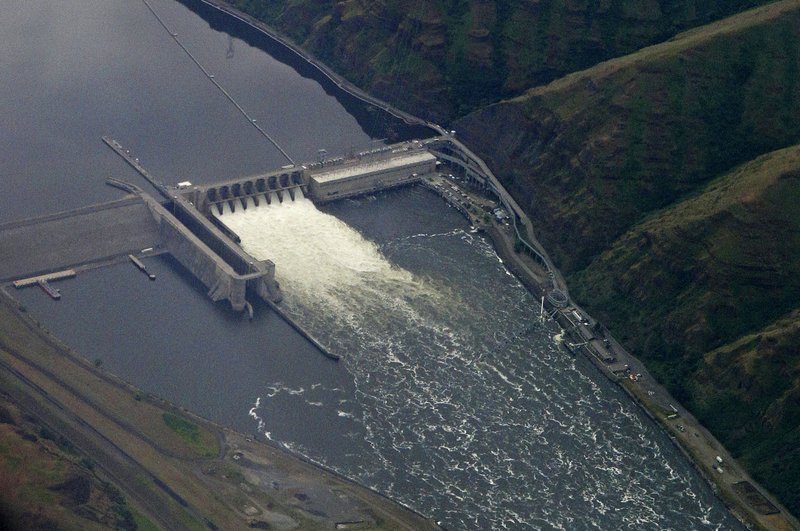
READ ON
A wide-ranging proposal to save wild salmon by removing the four Lower Snake River dams may be dead in the water. Washington Gov. Jay Inslee and Sen. Patty Murray say any proposal for the controversial dams needs a “science-based,” “community-driven” approach.
Idaho Rep. Mike Simpson had pulled together what he’s dubbed a new “concept” to save salmon. The $33.5 billion proposal would provide funding for what could be lost without the dams in place. Previous sticking points have included lost energy, irrigation access and grain transportation. Simpson wants to fund his concept through the Biden administration’s infrastructure plan.
In a joint statement, Inslee and Murray say there needs to be a long-term solution. But this isn’t it.
“While we appreciate Representative Simpson’s efforts and the conversations we have had so far with Tribes and stakeholders, it is clear more work within the Pacific Northwest is necessary to craft a lasting, comprehensive solution, and we do not believe the Simpson proposal can be included in the proposed federal infrastructure package,” they wrote.
Regional process
Instead, the lawmakers called for a more formal, regional process. They say a four-state process, known as the Columbia Basin Collaborative, should be sped up. More investments should be made in clean energy, habitat restoration and the agricultural economy, the statement says.
“Washington state has a history of successfully bringing diverse groups together to develop solutions that benefit all stakeholders. This must be the model for the management of the Columbia River Basin,” the statement continues.
MAP: Where Are The Lower Snake River Dams In Washington?
(Story continues below)
A spokesperson for Rep. Simpson did not respond to requests for comment Friday.
This latest statement is another blow to Simpson’s plan, which key Washington Republicans had opposed from the start. Reps. Dan Newhouse and Cathy McMorris Rodgers, whose districts envelop the four Lower Snake River dams, have been ardent proponents of the belief that dams and salmon can coexist.
At a recent forum, Simpson challenged Newhouse to suggest other ideas in place of Simpson’s own proposal. In keynote remarks, Newhouse said the region shouldn’t “reinvent the wheel,” but instead continue with current recovery plans.
“Our four Lower Snake River dams and our native fish populations are indeed coexisting. It takes hard work, serious effort, and investment; but they are coexisting,” Newhouse said.
Newhouse bristled at the fact that Simpson’s concept affects dams in other lawmakers’ districts, not Simpson’s district.
He acknowledged that “human development, including the construction of dams throughout the Pacific Northwest, has placed significant impacts on fish and our environment.”
But, he said, Washington dams have state-of-the-art fish passage technology and instead pointed to other dams in Idaho – Hells Canyon and Dworshak – that don’t have passage.
Support for Simpson’s proposal
Simpson’s plan has garnered approval from some neighboring lawmakers. Gov. Kate Brown has voiced support. More recently, Oregon Rep. Earl Blumenauer said, “The status quo isn’t working.” Blumenauer called Simpson’s concept a “bold starting point to address this and deserves thoughtful consideration from all sides.”
In a virtual discussion with Simpson, the Portland Democrat said he didn’t think everything would be ironed out in time for President Joe Biden’s infrastructure plan.
“But I think there may well be opportunities – if we get our act together, if we can identify areas of consensus and opportunities – we may have an opportunity to grab a little piece of funding here or movement in terms of legislation there that starts us along this path much more rapidly than we otherwise would,” Blumenauer said.
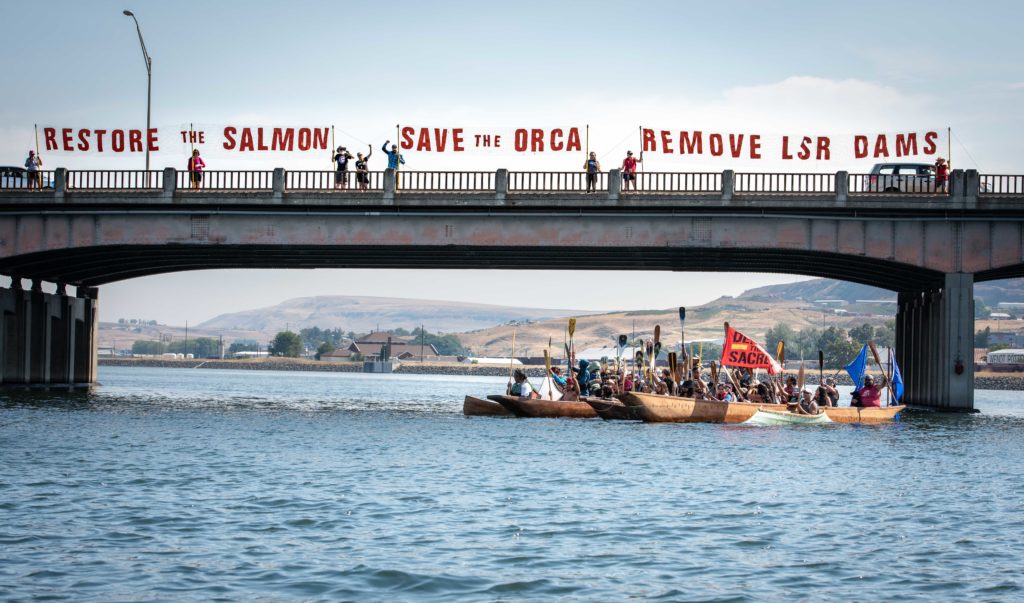
Tribal canoeists on the Memorial Bridge in Lewiston, Idaho, on the Clearwater River just before the confluence with the Snake River. The group joined the larger Free the Snake “flotilla” demonstration, Sept. 7-8, 2018. CREDIT: Mike Beiser/AP
Early on, Northwest tribes voiced strong support for Simpson’s plan to remove the four dams. Last month, representatives from 12 tribes came together to find ways to help advance Simpson’s concept.
“We view restoring the Lower Snake River – a living being to us, and one that is injured — as urgent and overdue,” said Shannon Wheeler, Nez Perce Tribe Vice-Chairman, in a statement. “This is an opportunity for multiple regional interests to align with a better future for the Northwest: river restoration and salmon recovery; local and regional economic investment and infrastructure improvement; and long-term legal resolution and certainty.”
The group called this a once-in-a-lifetime opportunity, saying the “true wealth of our region begins with the health of our rivers, fish and the ecosystem they support, which is our culture, history, and future.”
This is another way the tribes have had to fight for historic treaty fishing rights, said Delano Saluskin, Yakama Nation Tribal Council Chairman.
“Today – in the face of aging energy infrastructure, depressed local economies, climate change, and ever-declining fish runs – we must do something different to preserve our way of life in the Pacific Northwest,” Saluskin said in a statement.
Leaders of the Nez Perce Tribe say they are disappointed in Inslee and Murray’s decision and lack of tangible solutions, calling the Biden infrastructure package a “singular legislative moment” not likely to come around anytime soon.
Chairman Samuel N. Penney called this a “moment for action, not for more process.”
“We agree that to solve this crisis we need a regional solution; we must strive to keep all communities that rely on the Columbia and Snake rivers whole; and we should follow the science,” Penney said Friday in a statement to NWPB. “These are the very things that Rep. Simpson’s proposal set forth three months ago, and why the Nez Perce Tribe supports his proposal.”
Other groups split
Environmental and conservation groups have split on the proposal.
Nine environmental groups that had supported Simpson’s framework called on Inslee and Murray to come to a decision on the four dams “in months, not years,” provide “substantial, upfront funding” for communities and to listen to Tribes as full partners in what the groups dubbed the “Murray-Inslee plan.”
“We hear Sen. Murray and Gov. Inslee making an unequivocal commitment that salmon will not go extinct on their watch. We will hold them to that promise starting today,” the groups wrote.
A separate coalition of environmental and conservation groups have pushed back, voicing concerns that Simpson’s proposal would limit their legal actions for decades.
While they’d like the four dams to be removed or altered, the Center for Biological Diversity has called the plan a “nonstarter” and “deeply flawed.” The lawmakers made the right choice in rejecting the proposal, they said.
“But we hope they work quickly toward a path to removing them, as it’s absolutely critical to saving salmon and the Southern Resident killer whales,” said Sophia Ressler, Washington wildlife attorney with the Center for Biological Diversity.
Washington’s other Democratic senator, Maria Cantwell, told The Seattle Times she also doesn’t support Simpson’s proposal, saying there are other infrastructure opportunities to focus on, including recovery in Puget Sound and replacing highway culverts that block salmon habitat.
The Pacific Northwest Waterways Association, which opposes dam removal, also pointed to culverts, sea lions and toxics in the river as ways to better help salmon populations. In response to Inslee and Murray’s statement, the association said it supports a “collaborative, science-based approach” to restoring salmon runs.
“This is not just a Snake River issue. This is actually not just a Columbia Basin issue. This is a West Coast issue,” said Kristin Meira, the group’s executive director. “There is an inordinately narrow focus on the Snake River that ultimately does a disservice to all the rest of the region’s runs.”
Related Stories:
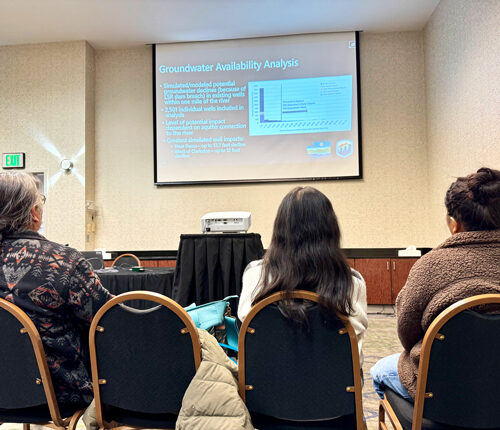
Snake River water, recreation studies look at the river’s future
People listen to an introductory presentation on the water supply study findings at an open house-style meeting in Pasco. After they listened to the presentation, they could look at posters
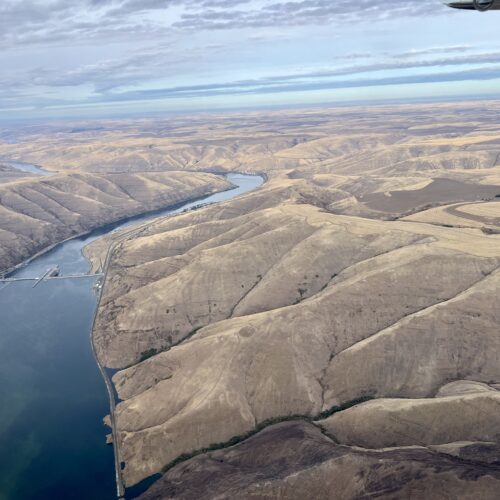
Toxic algal bloom found on the Snake River for second year in a row
Blue-green algae seen behind Lower Granite dam on the Snake River in 2023. (Credit: Courtney Flatt / NWPB) Watch Listen Toxic algae is turning up once again on the Snake
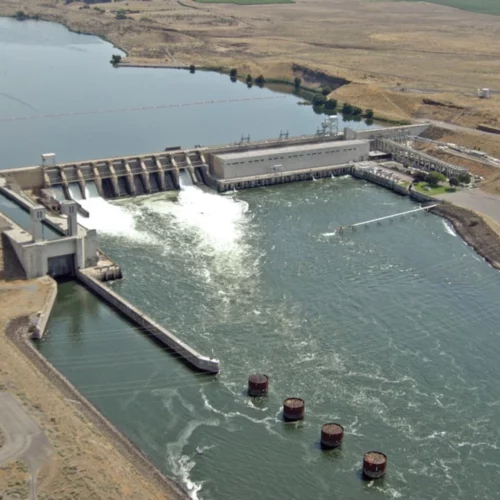
Historic agreement seen as a harbinger to Snake River dam removal
Ice Harbor Dam on the Snake River. Gov. Jay Inslee and U.S. Sen. Patty Murray said removing the four dams on the Lower Snake isn’t feasible right now. CREDIT: Bonneville















